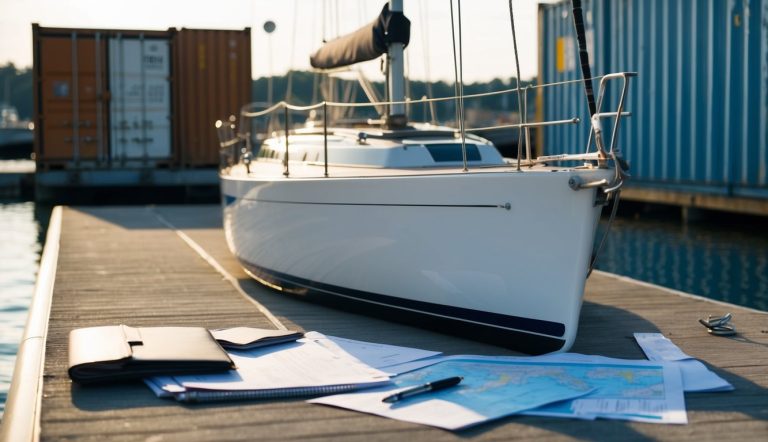Shipping a sailboat requires careful planning and proper documentation to ensure a smooth transportation process. Whether you’re moving your vessel across state lines or overseas, having the right paperwork ready will help avoid delays and complications.
To ship your sailboat legally and efficiently, you’ll need several important documents that prove ownership, registration, and compliance with transportation regulations. Understanding these requirements ahead of time allows you to prepare thoroughly and experience less stress during the shipping process.
Bill of Sale

- When shipping a sailboat, a boat bill of sale is one of the most critical documents you’ll need. This document legally transfers ownership from the seller to you.
- Your bill of sale should include the names and complete addresses of all parties involved in the transaction. This creates a clear record of who sold the boat and who purchased it.
- You’ll need to document basic vessel information including the Hull Identification Number (HIN), make, model, and year of manufacture. These details precisely identify the sailboat being transferred.
- Engine information must also be included in your bill of sale. This covers the engine make, model, horsepower, and serial numbers.
- If a trailer is part of the sale, include its details and VIN. Don’t forget to list any additional equipment included with the sailboat purchase.
- Some regions require ID information from both buyer and seller, so check your local regulations before finalizing the document.
- Make sure the bill of sale clearly states the purchase price and includes dated signatures from all parties. This completes the legal transfer of ownership.
Proof of Ownership
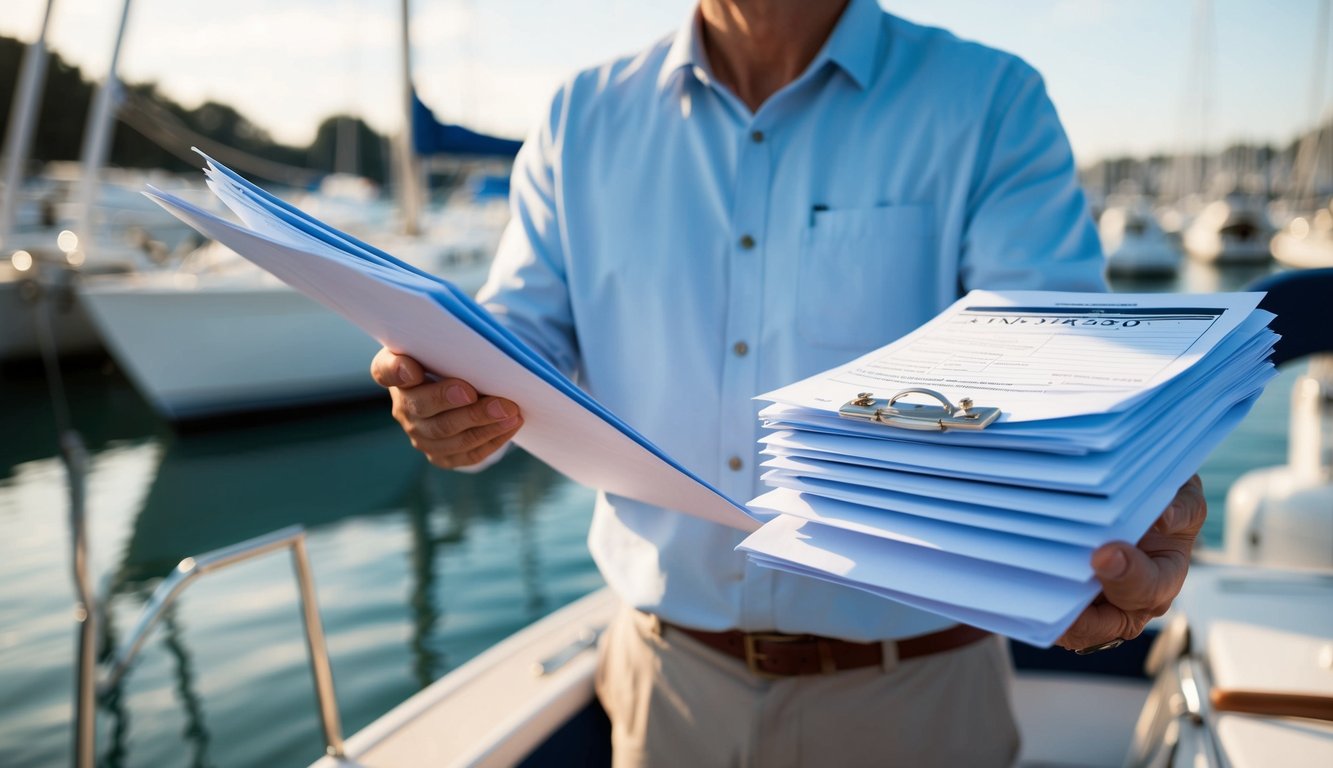
- When shipping a sailboat, having proper documentation that proves you own the vessel is crucial. This paperwork establishes your legal right to transport the boat and is required by shipping companies and customs officials.
- The most common proof of ownership document is your boat’s title or state registration. These official documents show that you’ve registered the vessel with your state’s boating authority.
- For boats that travel internationally, a Certificate of Documentation from the U.S. Coast Guard may be necessary. This federal form of registration is often preferred when shipping boats overseas.
- If you recently purchased the vessel, the bill of sale serves as important proof of ownership. Make sure it’s properly completed with signatures from both buyer and seller.
- For new boats, a Manufacturer’s Certificate of Origin can establish ownership, especially if purchased from outside the United States.
- Some shipping companies and customs officials may also request proof of insurance as additional verification of ownership.
- Always keep these documents in a safe, waterproof container during transport. Having multiple copies is recommended in case originals are needed at different checkpoints.
Boat Registration Document

- Boat registration is a key document you need when shipping your sailboat. This official paperwork proves you own the vessel and shows it’s legally registered in your state or country.
- You’ll need the original registration document when shipping your boat. Some states call this a “Certificate of Number” or vessel registration certificate. Keep it safe and accessible during the shipping process.
- Many shipping companies require you to provide a copy of this document before they’ll transport your sailboat. The registration contains important information like the hull identification number (HIN) and registration numbers.
- If you’ve lost your registration paperwork, you can get a duplicate by submitting an application to your state’s boating authority. This process usually requires filling out a form and paying a small fee.
- For boats 14 feet or longer, some states require both registration and titling, as noted by NC Wildlife. Check your state’s specific requirements before shipping.
- You can keep a copy of your registration on board, but having the original available during shipping is often recommended for verification purposes.
U.S. Coast Guard Certificate of Documentation
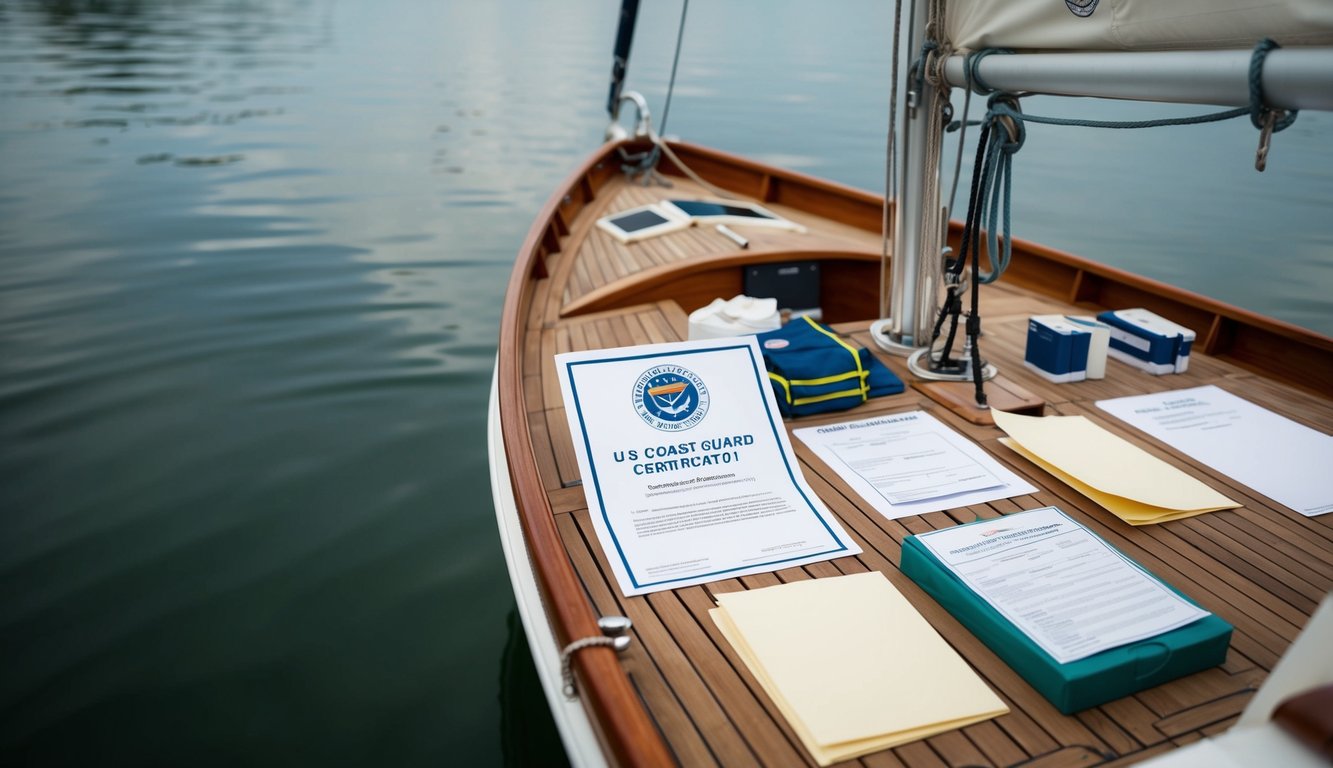
- A U.S. Coast Guard Certificate of Documentation is a national form of boat registration offered by the Coast Guard’s National Vessel Documentation Center. This official paperwork serves as proof of U.S. vessel nationality and provides certain benefits.
- You can apply for initial vessel documentation if your vessel has never been Coast Guard documented before. The certificate is typically valid for 1-5 years from when it’s issued.
- If you already had documentation but it expired, you can apply for reinstatement or return to documentation. Lost your certificate? You can request a replacement through the same office.
- You can renew your vessel’s documentation directly through the National Vessel Documentation Center. This process can be completed online for convenience.
- When shipping your sailboat, this documentation will be essential paperwork. It officially identifies your vessel’s nationality and provides legal protection for your ownership.
Ship Radio License
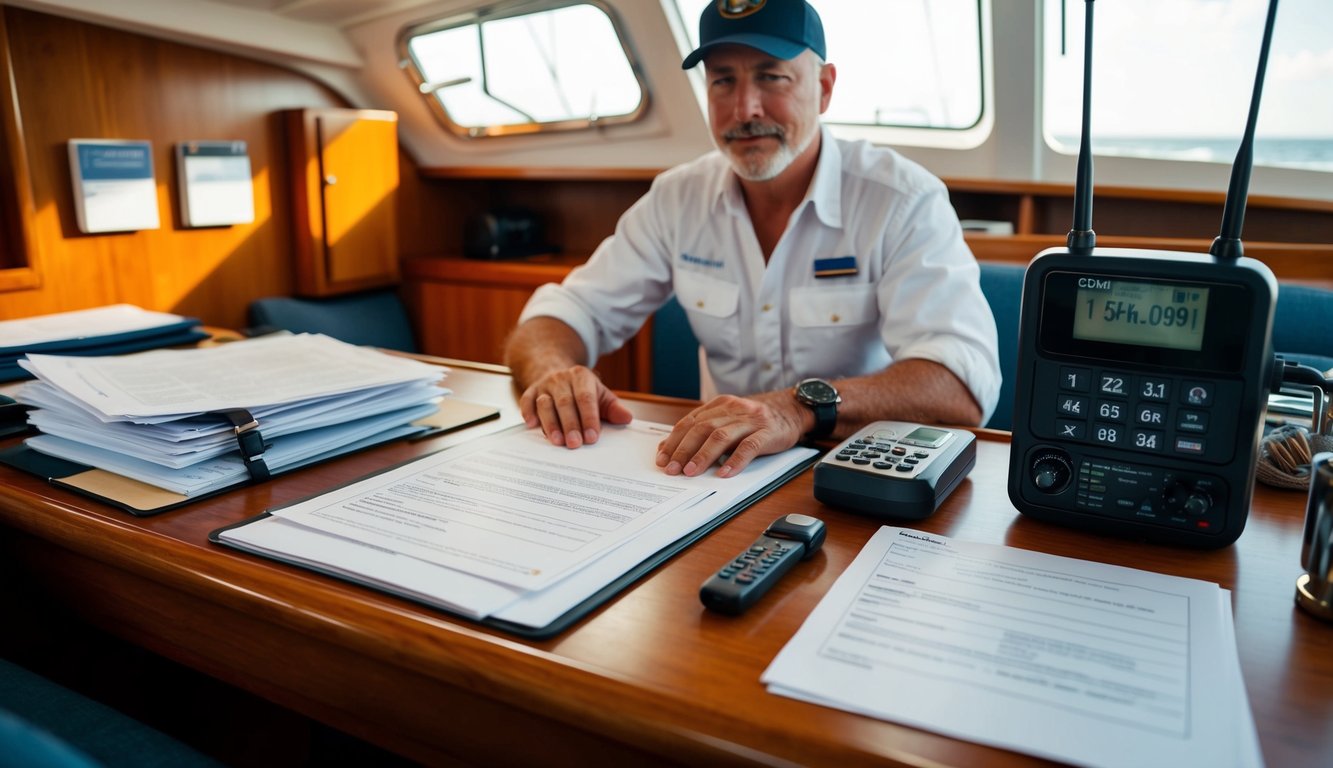
- When shipping a sailboat, you may need a ship radio license depending on your circumstances. This legal requirement varies based on how you plan to use your vessel.
- You do not need a license to operate a marine VHF radio, radar, or EPIRBs on voluntary ships operating domestically in U.S. waters, according to the Federal Communications Commission.
- However, if you plan to travel internationally, a Ship Station License becomes necessary. This is important to know before crossing borders with your sailboat.
- For handheld marine radios, you might need a marine utility station license in addition to your ship station license.
- To be legally compliant, some boaters need both a Restricted Radiotelephone Operator Permit and a Ship’s Station license from the FCC as mentioned in boating forums.
- The total fee for a Ship Station License renewal is $220, divided into two fee codes: $70 for the application fee and $150 for regulatory fees.
- When completing an application, remember to check “Portable” in block 10 on the FCC Application for Ship Station License if applying for a handheld radio license.
Boat Insurance Policy
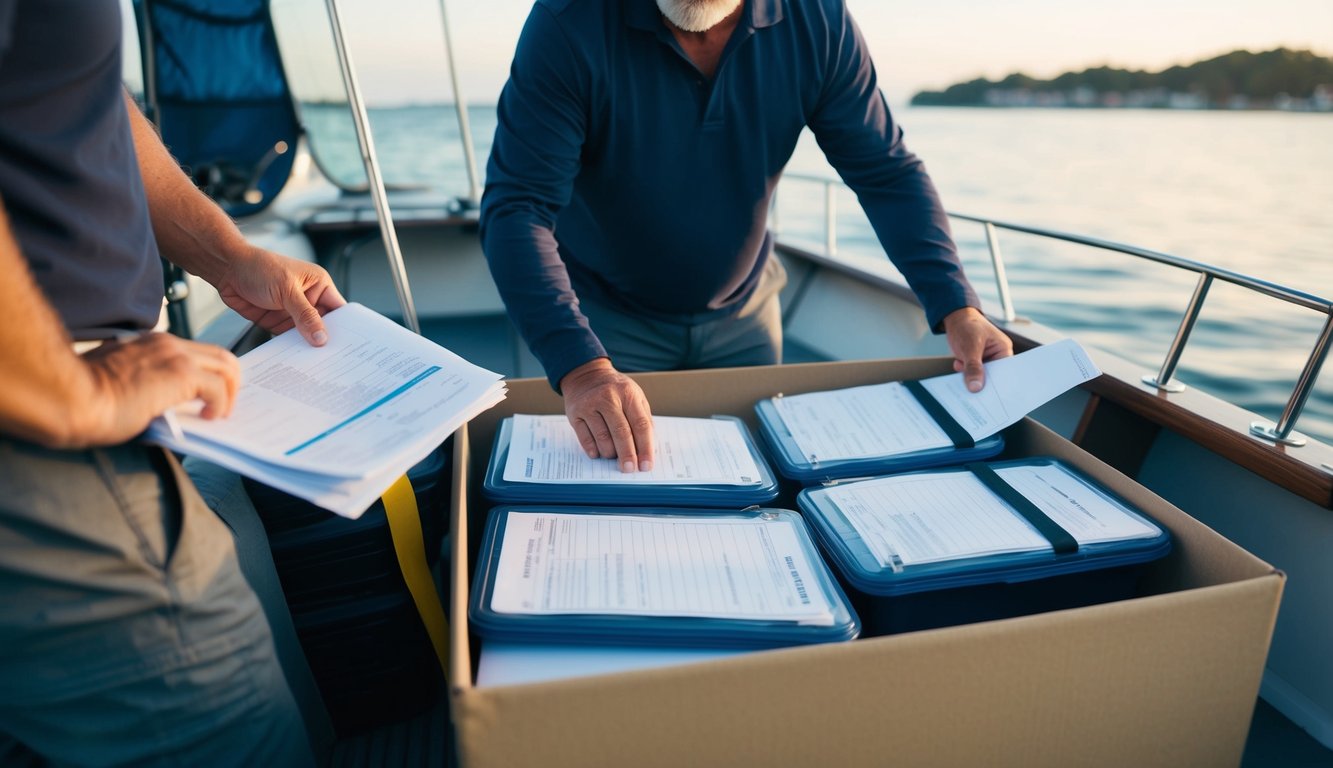
- When shipping your sailboat, having proper boat insurance is essential. Most shipping companies require you to have insurance coverage before they’ll transport your vessel.
- Your insurance policy should specifically cover your boat during transport. Regular boat insurance might not include this, so check your policy details.
- You’ll need to provide a copy of your boat insurance policy to the shipping company. This proves you have protection in case of damage during transport.
- Insurance coverage amounts vary based on several factors. The value of your boat, type of vessel, and hull material all affect your insurance requirements.
- Make sure your policy includes protection against common shipping risks. These include road accidents, weather damage, and handling mishaps.
- Some shipping companies offer temporary insurance for the transport period. This can be a good option if your regular policy doesn’t cover shipping.
- Always verify what your boat insurance policy covers before shipping. This helps avoid unexpected costs if something goes wrong during transport.
Motor Carrier Number
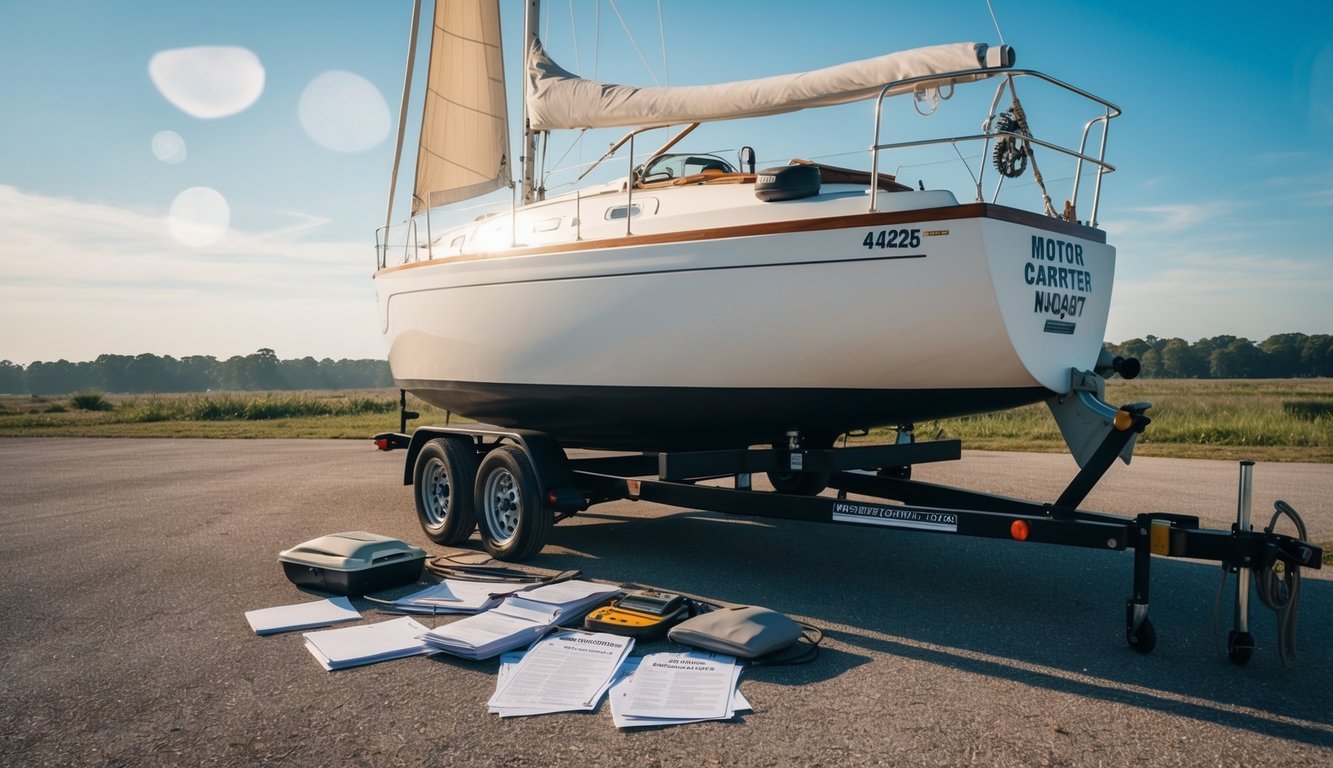
- A Motor Carrier Number is a key requirement for companies that transport boats commercially. If you’re hiring a transport company to ship your sailboat, they must have this number.
- This number is issued by the Federal Motor Carrier Safety Administration (FMCSA) and proves the company is legally authorized to transport cargo across state lines. It’s different from a USDOT Number, though both are often required.
- When preparing to ship your sailboat, you should ask the transport company for their Motor Carrier Number. This allows you to verify their credentials and ensure they’re operating legally.
- You can check the status of a company’s Motor Carrier Number through the FMCSA’s online database. This verification step helps protect you from unlicensed transporters.
- Professional boat transporters will display their Motor Carrier Number on their paperwork and often on their vehicles. This transparency is a good sign of a legitimate business.
- Remember that boat transportation companies must maintain proper licensing to legally operate. Checking these credentials is an important part of your boat shipping checklist.
USDOT Number
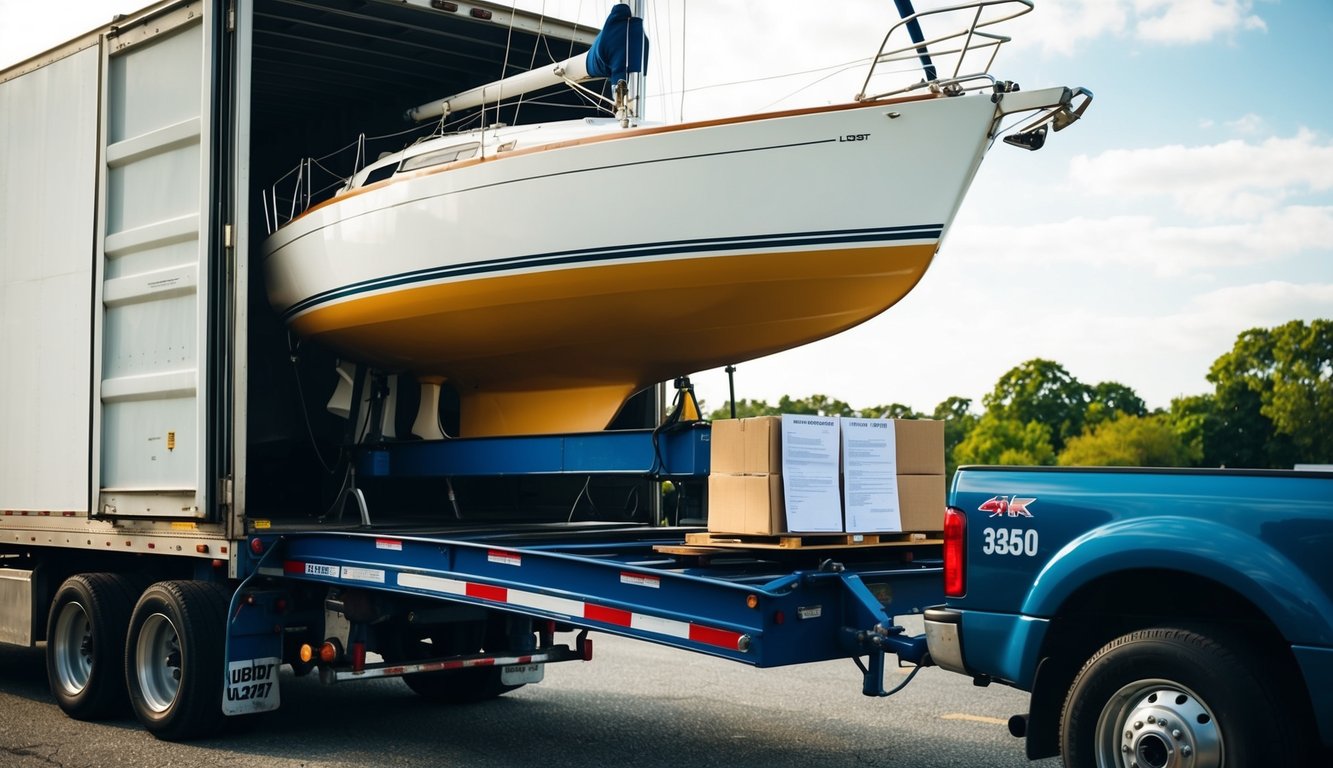
- When shipping a sailboat, you may need a USDOT (United States Department of Transportation) number depending on your specific situation. This unique identifier helps federal and state agencies monitor safety information for commercial vehicles.
- You are required to obtain a USDOT number if you’re using a vehicle to transport certain types of hazardous materials. This requirement applies to commercial carriers rather than individual boat owners hiring transport services.
- If you’re hiring a boat transport company, they should already have their own USDOT number. When vetting potential transporters, ask for their Motor Carrier Number and USDOT Number to verify they’re properly registered.
- For private individuals shipping their own sailboats, you typically don’t need a USDOT number. Some states may have different requirements, so check local regulations before transporting.
- Don’t be confused by misinformation. As a private party shipping your boat, you might hear you need a DOT or MC number, but this usually isn’t necessary unless you’re operating as a commercial carrier.
Commercial Driver’s License

- If you’re planning to transport your sailboat, understanding the driver’s license requirements is crucial. Transporters who move boats commercially need a Commercial Driver’s License (CDL).
- The CDL requirement applies when the combined weight of the towing vehicle and boat trailer exceeds certain limits. These limits vary by state, but generally apply to combinations over 26,000 pounds.
- Professional boat transport companies must employ drivers with valid CDLs. When hiring a transport service, you can verify their credentials by asking for their Motor Carrier Number and USDOT Number, which confirm they meet legal requirements.
- Different classes of CDLs exist based on vehicle weight and type. Class A CDLs are typically needed for heavy boat transport involving large trailers.
- If you’re transporting your own sailboat with a personal vehicle, you may not need a CDL depending on the boat’s size and weight. However, you should still check your state’s specific requirements.
- Remember that proper licensing ensures safe transport and compliance with transportation regulations. It also affects insurance coverage in case of accidents during transit.
Cargo and Commercial Liability Insurance

- When shipping your sailboat, insurance protection is essential. Transporters must have both cargo and commercial liability insurance to legally transport your vessel.
- Cargo insurance specifically covers your sailboat during transit. This protection safeguards against damage, loss, or theft while your boat is being transported from one location to another.
- Commercial liability insurance protects against accidents or damages the transporter might cause to others during the shipping process. This includes damage to property or injuries to people not directly related to your boat.
- Before finalizing any shipping arrangements, always request proof of insurance documentation from your boat transporter. This paperwork should clearly show policy numbers, coverage limits, and expiration dates.
- Make sure the transporter has adequate coverage limits for your vessel’s value. Standard policies may not fully cover expensive or specialty sailboats.
- Ask if the insurance covers your boat during loading and unloading. These are critical times when damage can occur, and some policies might not include this coverage.
- Keep copies of all insurance documents for your records. Having this paperwork readily available will be invaluable should you need to file a claim.
